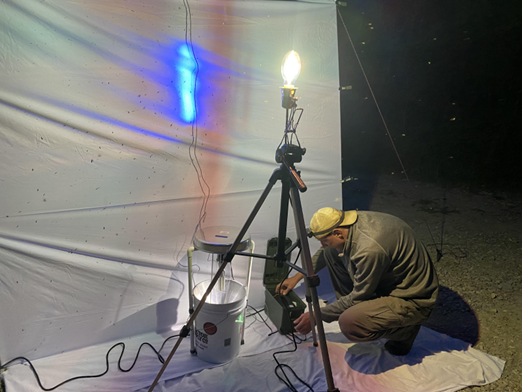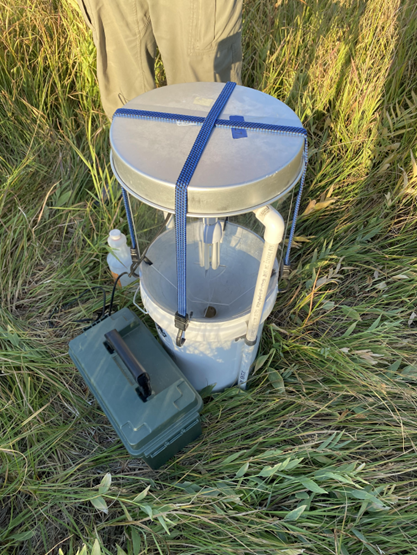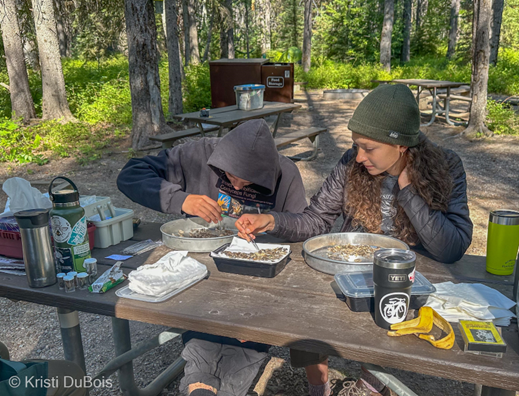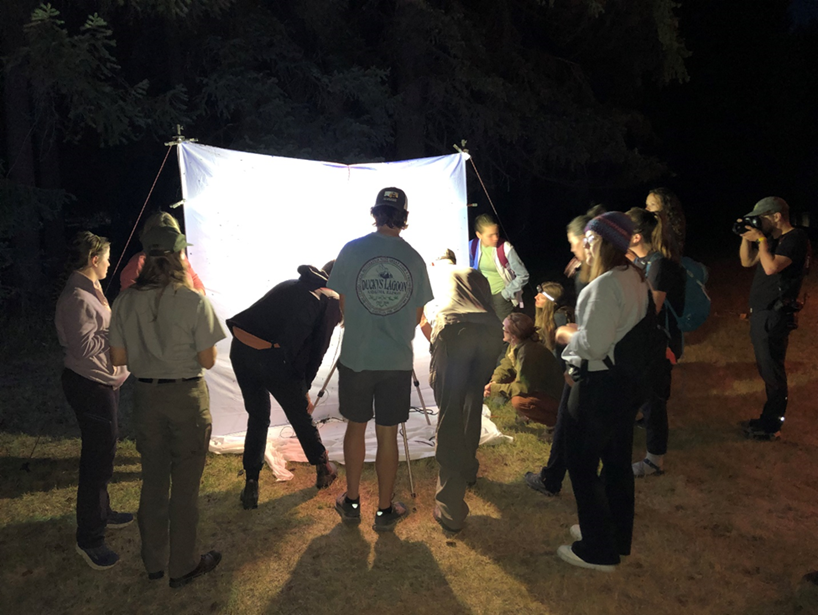Last updated: October 14, 2024
Article
Working the Night Shift: Glacier’s First Nocturnal Pollinator Bioblitz

NPS/Hannah Roodenrijs
Ever wondered what happens in the park after dark?
This year, the Citizen Science Program hosted the first-ever Nocturnal Pollinator Bioblitz in Glacier National Park to investigate the important work of these under-researched creatures. Nocturnal pollinators can include bats, butterflies, lizards, mice, and moths. This bioblitz focused on moths, which have been virtually undocumented in the park, despite being the most abundant nocturnal pollinators - with at least ten times more moth species identified compared to butterflies across the world. Moths play a crucial role in pollinating many of our rare plants and serve as a primary food source for one of our most beloved species, the grizzly bear.
The Nocturnal Pollinator BioBlitz is an integral part of an ongoing research project, serving to bridge a significant knowledge gap in Glacier National Park by enhancing our understanding of the biodiversity and vulnerability of our nocturnal pollinators in the face of challenges such as light, air, and water pollution, as well as climate change. The bioblitz aimed to discover, identify, and catalog the rich variety of moths present in our park to establish a baseline for monitoring their population into the future. This is of significant importance, as the last moth collection conducted in the park was in the 1920s, and it reported a mere 44 species, a substantial underestimate of the actual diversity.

NPS/Emmeline Kraus
Moth researchers Mat Seidensticker from the Montana Moth Project and Chuck Harp from the C.P. Gillette Museum of Arthropod Diversity worked independently for three nights and collaborated with over 100 citizen scientists during two events to attract and identify moth species. I had the privilege of working one-on-one with Mat and Chuck during their first night of sampling.
I met Mat and Chuck at their campsite in Apgar at 7:00 pm, not knowing what to expect for the evening. They were both eager to be sampling in Glacier National Park for the first time, and even more eager to have someone interested in learning about their passion-- moths. They were busy setting up, carrying 10-gallon buckets, metal poles, and bed sheets. These items, along with others, were used to create three makeshift contraptions: bucket traps, light sheets, and pheromone traps. You can make these traps using items found in your own kitchen, as many amateur and expert moth collectors do.
The bucket traps consisted of a 10-gallon bucket, cut plexiglass, a cake pan, a funnel, and, most importantly, a black light powered by a small pre-charged generator. Inside the trap, there was an egg-carton jungle gym and a plastic water bottle filled with ethyl acetate with a cotton wick, emitting a strong nail polish remover-like odor. The trap operated on a simple principle: moths would be drawn to the black light, guided down the plexiglass into the bucket, where they would seek refuge in an egg carton and eventually succumb to the ethyl acetate vapor.

NPS/Emmeline Kraus
Mat's light sheet was constructed with two metal poles supported by rebar (which proved challenging to install on the gravel road), a tightly-strung rope, and a white bed sheet. Chuck, on the other hand, used a pre-made plastic pipe frame. Both types of light traps were illuminated with black lights and a mercury bulb. The light traps were less lethal than the bucket traps, as Mat and Chuck selectively chose which moths to collect from them. Their focus was on capturing unique specimens rather than merely attractive ones.
The pheromone traps contained female pheromones produced in laboratories to attract male moths. Once males entered the trap, they could not escape and were later collected and counted. Mat and Chuck strategically hung these traps around their campsite, resembling lanterns hung in trees.
Once the bucket traps and light sheets were loaded into our vehicles, Mat and I headed to our moth collection site near Christensen Meadows, while Chuck proceeded further down the road to McGee Meadow. Upon arriving at our respective sites, we began distributing our moth-catching devices. Our objective was to capture as many diverse moth species as possible. To achieve this, we searched for the warmest areas, as moths are more active in higher temperatures, open areas to ensure moths could see the light, and areas with different vegetation types to capture various moth species.
The evening primarily involved me circling the light sheet, scouting for interesting-looking moths and asking Mat questions about them while trying to stay warm on the 30-degree night. Mat quizzed me on differentiating between macro- and micro-moths, which is an arbitrary size-based categorization, and on distinguishing between various moth types.
Throughout the night, the sound of branches cracking made us feel on edge. Consequently, when we checked the nearby traps, Mat and I had our bear spray ready, just in case a bear found our bucket traps inviting for dinner. However, as we walked along the road, we noticed stout boreal toads rustling through twigs, hinting that we should be more worried about encountering witches than bears. Meanwhile, at the other location, Chuck reported hearing similar noises, though not caused by toads, but by rabbits.

Photo by Kristi DuBois with permission
The following morning, I rejoined Mat and Chuck at their campsite at 7:00 a.m. to sort through the previous night's collection. My task involved sifting through moth piles in cake pans, turning them right-side-up, and sorting them based on size, shape, and color, like puzzle pieces. On their last morning, I was promoted to the task of creating what they jokingly referred to as "moth lasagna." This involved arranging the pre-sorted moths between layers of cotton and tissue paper in tupperware containers—an ideal job for someone with a penchant for organization and perfectionism. Chuck then stacked the containers filled with moths into coolers to be sent to the C.P. Gillette Museum of Arthropod Diversity, where the moths would be spread and sorted into collection drawers.

NPS/Emmeline Kraus

Photo by Mat Seidensticker with permission

Left photo by Chuck Harp. Middle and right photo by Kristi DuBois.
Naturalist and photography expert Kristi Dubois joined forces with citizen scientists to capture images of various moth species. She demonstrated clever techniques for using flashlights to obtain photos in less-than-ideal photography conditions. You can view Kristi's photographs of the moths, along with images of the citizen scientists, on her Flickr page.
The researchers conducted nocturnal sampling at nine sites over five nights, collecting approximately 675 specimens, cataloging 128 macro-moths and around 60 micro-moths, and getting very little sleep. So far, they have identified four moth species that are new state records, never previously documented in Montana. Their work will yield crucial insights into the health of Glacier National Park's moth populations and the broader ecosystems, laying the foundation for moth conservation efforts in the years to come. Before this week, I had no idea that moth research could be an entire career, but after spending time with Mat and Check, even the biggest bug hater would consider it.
